A hearty, healthy multigrain Adai dosa made of a coarsely ground and fermented batter of idli rice and various lentils. Adai tastes great with Avial, a yogurt based stew of mixed vegetables. I like to make it for breakfast or dinner after adding a lot of minced shallots and tiny pieces of fresh coconut, and served with jaggery and fresh white unsalted butter.
Adai is a favourite in Tamil Nadu for breakfast or for an early dinner in households where rice, sambar, rasam etc are not prepared for dinner, and instead a tiffin item is served. The multigrain Adai Dosa is both filling and nutritious. Even when the adai is made as a thin crepe, 2-3 would suffice for one person. For a light eater like me, 2 would be the outer limit.
As the Adai comprises a batter of mixed lentils and rice, it is nutritious, rich in both protein and iron. The dry chillies give a nice touch of spice, and the lentils give the texture to the crepe. Using a non stick pan or tava would reduce the usage of oil for each crepe.
Kitchen Hints for Making Multigrain Adai Dosa:
- The tava should be very hot before you start making the crepes, and then the stove flame reduced when you are pouring the batter. If you don't reduce the flame, the batter may set before you can spread the adai to its circular shape.
- The batter should be at room temperature. If you had refrigerated it earlier, you need to set it out ahead of time so that it gets to room temperature. Cold batter will stick to the tava.
- If you are not going to use all the batter, add the shallot, coconut and curry leaves only to as much of the batter as you plan to use. The remaining batter may be refrigerated in a closed container for later use, and usually remains fresh for upto 3 days.
- Coarsely ground batter gives a crispy adai. However all the elements should be fully ground.
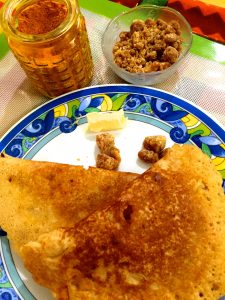
"Recipe"

Multigrain Adai Dosa savoury Crepes of rice and mixed lentils
Ingredients
- 1 cup raw rice
- 1 cup Par boiled rice puzhungal arisi/ idli rice
- ½ cup channa dhal Bengal Gram Lentils/ Kadala paruppu
- ¼ cup Tuvar dhal Pigeon Pea lentils/ Thowarm paruppu
- 1 tablespoon moong dhal
- 1 tablespoon Urad dhal
- 5 Dry red Chillies
- ⅛ teaspoon asafoetida (Hing)
- to taste salt
For adding to the Batter
- ½ cup Shallots minced small onions
- ½ cup coconut pieces
- ¼ cup curry leaves minced
For making the Adai
- ½ cup sesame oil About 1.5 teaspoons per Adai
Instructions
How To Make Adai Batter
- See the Kitchen hints above on how to grind the batter and how to make the adai. Soak the Rice and Dhals separately to get the required consistency for the batter: Wash and soak the rice (both varieties mixed together) for 3 hours Wash and soak all the dhals together, also for 3 hours.
- After the rice and lentils have soaked, get ready to make the batter. Remove the stalks from the chillies and grind with a little salt and the hing.
- Drain the rice and add to the chillies, grinding to a coarse paste with a little water as required, till the rice takes the texture of a coarse semolina (sooji/ rava). Remove the paste from the processor and set aside.
- Drain the dals and grind, adding a little water, to a coarse paste, ensuing however that the dals are completely ground. Remove and mix the rice paste with the dhal paste. Cover and set aside for at least 3 hours, to ferment.
How To Make Adai
- Mince the shallots (sambar onion), slice the coconut to thin pieces (about ½ cm long). Mince the curry leaves. Heat the tava till its very hot. Add the minced shallots, coconut and curry leaves to the batter, add salt to taste (keeping in mind the salt already added when grinding) and mix well.
- Reduce the heat, add a teaspoon of oil on the tava. Pour a large ladleful of batter on the tava, and quickly spread it out into a circle. Pour a little oil, all around the outside of the edges of the adai.
- My Mom used to make a small slit or hole near the circumference of the adai, one in each of the four directions and one in the centre, and sprinkle a few drops of oil in each. I do the same thing, and I think it helps the adai to cook faster and evenly.
- After about 1 minute, and using a flat spatula, gently lift the edges and check that they are getting to be an orangey red. Slide the spatula all around the edges and then beneath the centre. If there is no resistance and the adai lifts easily, it is ready to be flipped. The first adai may take a littte more time than the ones following.
- Flip carefully with the spatula, ensuring the adai comes to rest on the centre of the skillet. Add a few drops of oil around the outside of the edges. After about 1.5- 2 minutes, remove from the pan.
- Serve hot, with white unsalted butter, jaggery and mulagaipodi (dosa chilly powder/ gun powder) or with avial - vegetables cooked in yogurt and coconut paste.


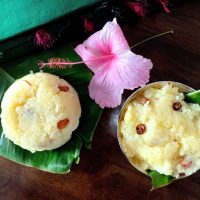
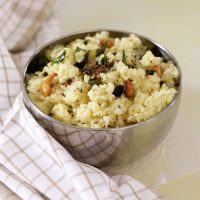
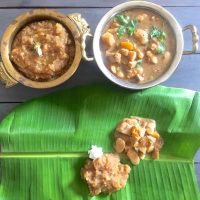
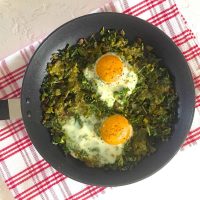
Comments
No Comments